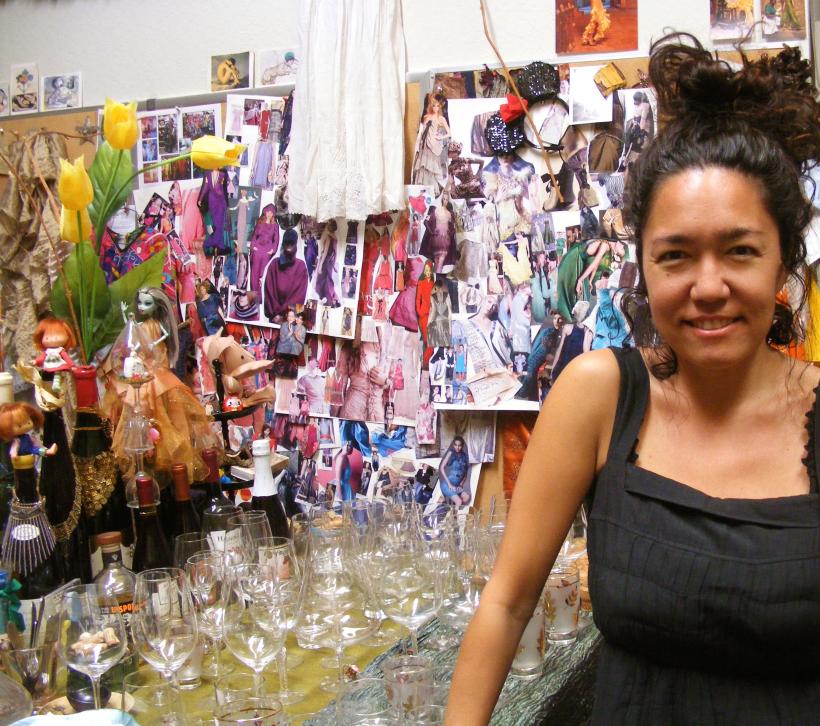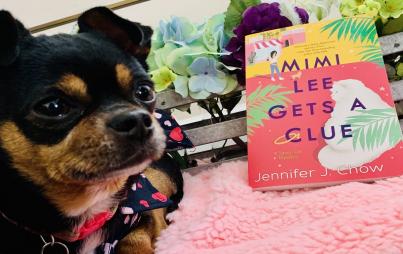
There's no one way to describe Cari Borja, a creative force of nature with a resume like no other.
Borja—Dr. Borja to you—is, first and foremost, a highly regarded anthropologist with a PhD from UC Berkeley, where she is currently a visiting scholar. She's also a sought-after fashion designer whose clothes have appeared on red carpets and been commissioned by dance and opera troupes. She's the host of exclusive, high-profile "salon dinners" at her design studio, where fascinating people from the worlds of food, fashion, film, wine, art, and tech come together to exchange ideas and mingle—and where she makes all the food from scratch. She's writing two books, including one on her dinners.
Oh, and she used to be a competitive rollerskater.
We caught up this multi-faceted creative wunderkind to chat about the perfect dinner party, her life choices, and the power of curiosity.
What inspired you to start hosting dinners, sometimes with guests you've never met before?
When I started making clothes, the idea was based on my PhD in Jamaica, about the art object—how do you bring people from different socio-economical and ethnic backgrounds together? The art object does that. I loved creating relationships through clothes, and I thought it could be great to create a community of people to come together at my studio. But of course, only a certain type of person is interested in my clothes. At the same time, I started interning at [famed Berkeley, California restaurant] Chez Panisse and became more confident in my cooking. I decided to bring people together in the studio through food. I cooked by myself for the first dozen dinners, then started bringing in collaborators.
What's special about your guests?
The dinner series started with people I knew, and expanded to "fantasy guests"—people I wanted to get to know, or just knew of. Because the studio isn't as intimate as a home, it's easier to invite people. I utilize Facebook and email to reach out.
I don't love how fragmented and segregated we are as society—the academic world, the fashion world, the art world. I like mixing different scenes and I think that's what's important to me—learning from one another and putting people together. Sometimes I put one guest in the middle, and surround them with people according to a "theme," a circular idea with a common thread. The guests have to discover the common thread, so there's an element of surprise.
Can you give us hosting tips?
The first thing is integrating cocktails. A nice cocktail at the entrance puts everyone at ease, and gives people a sense of where to go. I also approach guests as they come in and immediately distribute and introduce them. Also, in the email I send, I give a little background about the guests, to prepare everyone. And I never sit couples together—unless they insist. But they rarely do.
How do you balance your many titles and jobs?
The core is to be curious and passionate in life. I want to say everyone has this curiosity, but it's really not the case—even in academia, within a discipline, you can be curious about your field, but not about what goes on around you. You might know everything about Papua New Guinea, and know nothing about Berkeley. Since I'm so interested in different things, I know all these different people and am discovering new things all the time, and life pulls me in different directions. But there's always a larger connection.
How did you pick up design?
I was a competitive rollerskater, and my mom made my outfits; I only helped with the rhinestones design. So I was around clothes all the time. And in college I liked to customize sweatshirts and make things my own, more "me."
Then one day, I was finishing my PhD and getting married in Venice, and my husband and I traveled to Italy. Someone asked me if I wanted to be an academic for the rest of my life, and since we were on a historic island, I said I wanted to make clothes for the sirens. Once you utter it, it makes you wonder—why did I just say that? I came home and started experimenting. Right now, I'm heading in the direction of mass-producing some of my classic designs, locally.
Your lifestyle appears very desirable, effortlessly so—how did it all come together?
I had no father figure, it was just my mom and I—not having much when you grow up makes you a fighter. Plus, the fact that my dad is from Guam, people constantly made fun of me for looking Chinese—in Massachusetts! I always thought, I'll show them. I still have that—there's a little bull in me. I look at my kids now and think—God, they have too much. How could I put that bull in them?






